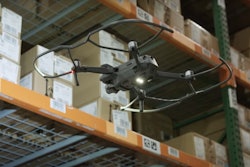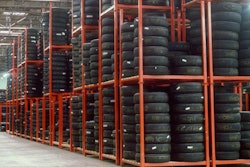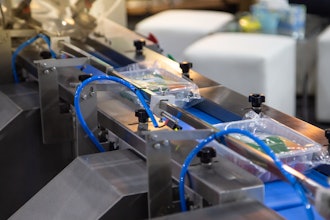This article originally appeared in the November/December issue of IMPO Magazine. To view the digital version, click here.
You wouldn’t leave your house in a chaotic, unorganized mess — and the same should go for your plant. Containers, bins, totes and various means of storage and inventory management can drastically improve the way your plant operates — and save you a lot of money in the process.
By ensuring that you are using the right containers, bins and totes for your plant, you are ensuring easy access to materials. Furthermore, you are eliminating the time wasted on searching for materials in a poorly organized setting, increasing worker productivity and overall efficiency.
“Storage bins and totes are critical to the smooth and efficient operations of any plant,” says Bart Eggert, industrial product line manager for Akro-Mils. “Storage bins keep critical components organized, easy to find and close at hand to the workstation. Totes allow for the transport of materials and finished goods not only within the plant, but often all the way to the point of use.”
Akro-Mils is a manufacturer of plastic and metal storage, organization, transport and material handling products for use in multiple markets. They offer a variety of storage products designed for different applications — including a number of Kanban-based products to minimize excess inventory.
Just as there is no one way for a person to store their dishes, however, there is no single “right” way for a plant to manage, store and organize inventory. There are many methods to take into consideration based on what’s best for your plant. The current trends in bins and storage are aimed at selecting the right form of storage in order to provide the biggest benefit to the operations overall.
“There is a strong focus on inventory management, particularly in reducing inventory holding costs,” says Eggert. “Managers are looking at how to choose the most appropriate bin for the application to maximize their cost-saving efforts.”
Look at the needs of your plant and the particular materials you will be handling. Would a plastic tote do the job, or should you consider a more durable metal bin? Do you want to color-code containers, or is that not the biggest priority for your operations? Are you looking to save on the costs of storage, or are you more concerned with a higher quality container? With the variety of storage bins to choose from, it all depends on your plant, but ultimately any type you choose is important to the efficiency of your operations.
“Bins, totes and containers improve efficiency because they are durable, reliable, uniform and offer a host of features and options that allow for a more tailored storage solution,” Eggert says. “Plastic storage bins retain their shape and won’t wear out quickly like cardboard alternatives. Color coding with storage bins also allows for quick identification of parts, resulting in less time wasted searching for items.”
Of course, there are sometimes complications that hinder the effectiveness of an inventory process. Quite frequently, it has to do with lack of knowledge or understanding of the management model.
Familiarizing workers with the system as well as the storage units themselves is critical to the overall efficiency of the inventory management method. But it’s just as important to ensure they have the proper tools to do so — particularly, the proper units.
“The biggest complication when it comes to inventory management is the human element,” says Eggert. “While a two-bin Kanban system can be a simple and tremendously effective inventory control process, its success relies on the proper training of the staff and strict adherence to the process. The best way to combat this issue is ongoing training and empowerment of staff.”
Considering “Green” Options
With the increasing conversation about eco-friendly manufacturing and “going green”, another choice to take into consideration is recycled pallets and containers. One example is totes made from recycled materials.
Another example is reusable or recycled pallets. Safety is a top priority, so it is important to inspect these pallets to make sure they are still fit for use in your plant. One of the biggest benefits to purchasing reused or recycled pallets is that they generally have a lower cost, so it saves the company money to use them.
Ultimately, there are numerous options to explore when considering some eco-friendly alternatives, and the benefits range from company reputation to cost of storage material, but once again, it’s all dependent on what will work for your plant.
Trends in Technology-Based Inventory Management
It comes as no surprise that technology has changed the way a plant operates — and while it can be difficult and, at times, expensive to implement these changes, it frequently also introduces a variety of benefits and increases organization and efficiency: two key principles at the very core of inventory management.
“Advancements in scanning and tracking technology have had a major impact on the way inventory is managed within storage bins,” Eggert says. “Because inventory usage can now be analyzed quickly and accurately, in many cases inventory holding quantities can be greatly reduced.”
One example of this is with RFID systems. Though RFID is often criticized as too expensive or not common enough to be practical, it has benefits — especially for closed-loop systems. While a bar code alternative requires the scanner to “see” the bar code, RFID simply requires the tag to be in a readable range of the scanner. Furthermore, while barcodes usually only identify the manufacturer and type of product, RFID tags can contain additional information that identify the unique item (which can include information such as expiration dates and so on).
There are also a multitude of inventory management software applications now available that make management faster and easier than using a spreadsheet, for example.























